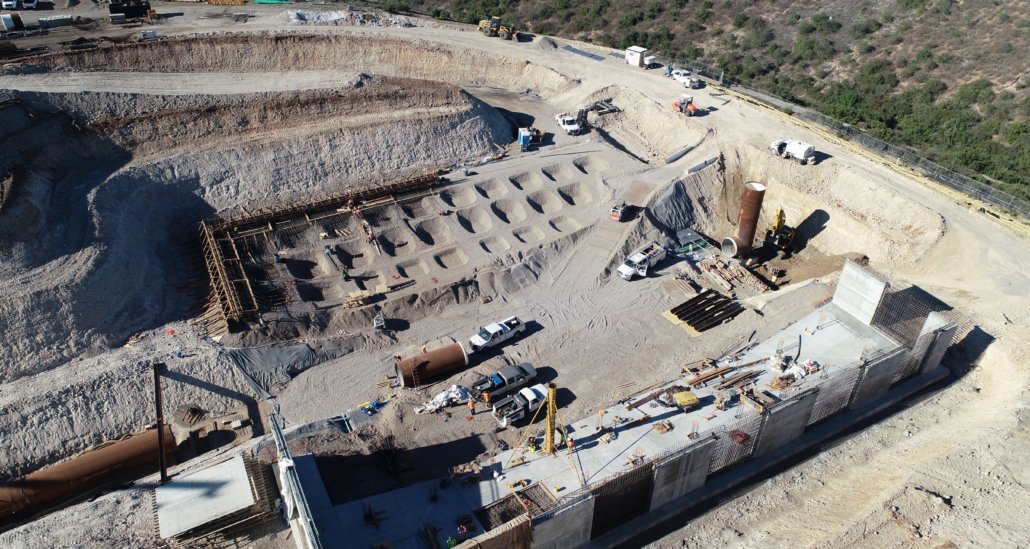El Cajon homeowner Christine Laframboise’s water-saving landscape design trading turf for a less thirsty approach was named the Otay Water District’s 2021 WaterSmart Landscape Contest winner.
The annual contest is held by water agencies throughout San Diego County to award one resident from their respective service area for their water-saving landscape. Otay selected Laframboise for her well-thought-out design, plant selection, maintenance, and methods for efficient irrigation.
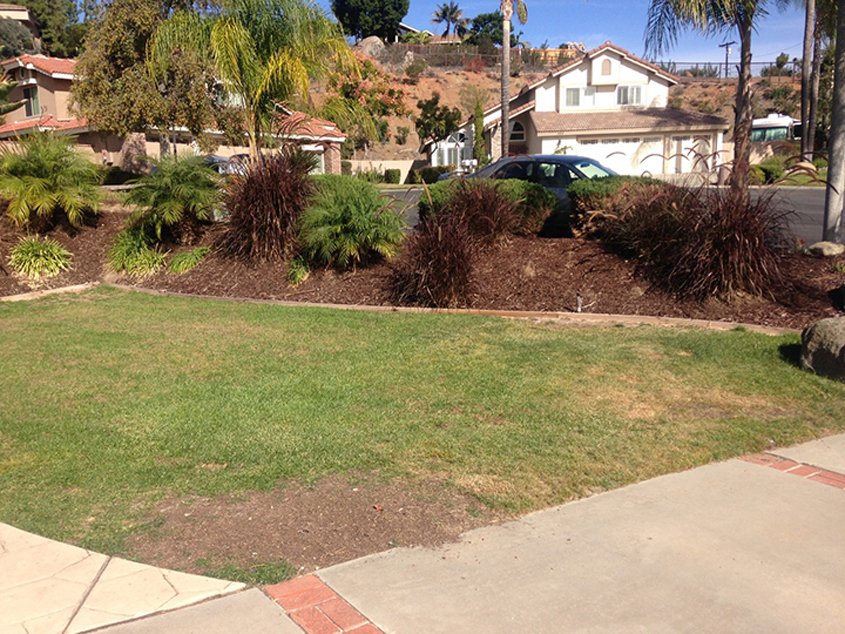
Christine Laframboise greatly reduced her water use and costs by removing the old lawn. Photo: Otay Water District
El Cajon homeowner saves water
“We are proud to have customers like Christine who are committed to outdoor water-use efficiency and can demonstrate the many attractive features that homeowners can incorporate into their WaterSmart landscapes, especially at a time when California is facing drought conditions,” said Otay Board President Tim Smith. “We encourage customers to take advantage of our free resources and rebates to help with their landscaping needs.”
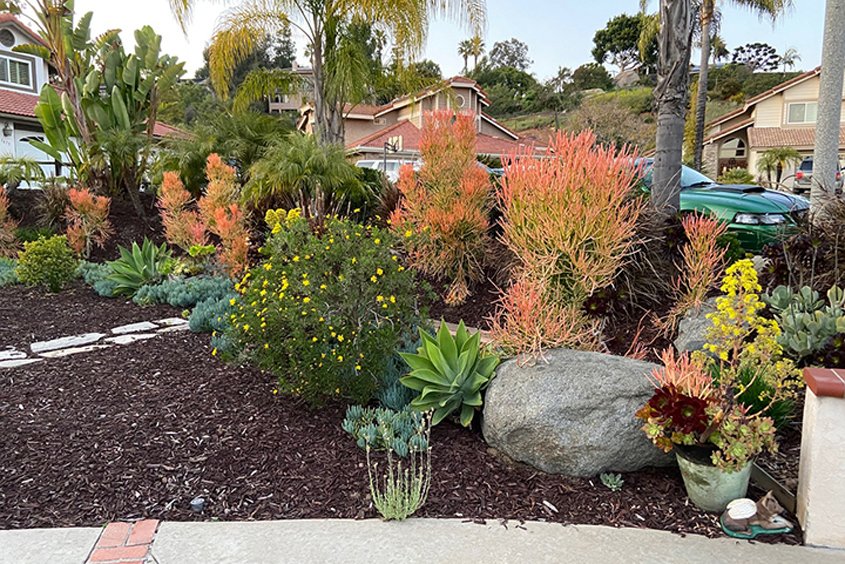
The new landscaping replaced turf with waterwise plants. Photo: Otay Water District
Tearing out thirsty turf
Thirsty lawn once covered Laframboise’s 1,895-square-foot front yard. Its upkeep required large amounts of water. In 2014, she took landscaping classes presented by the San Diego County Water Authority’s WaterSmart Landscape Makeover Program.
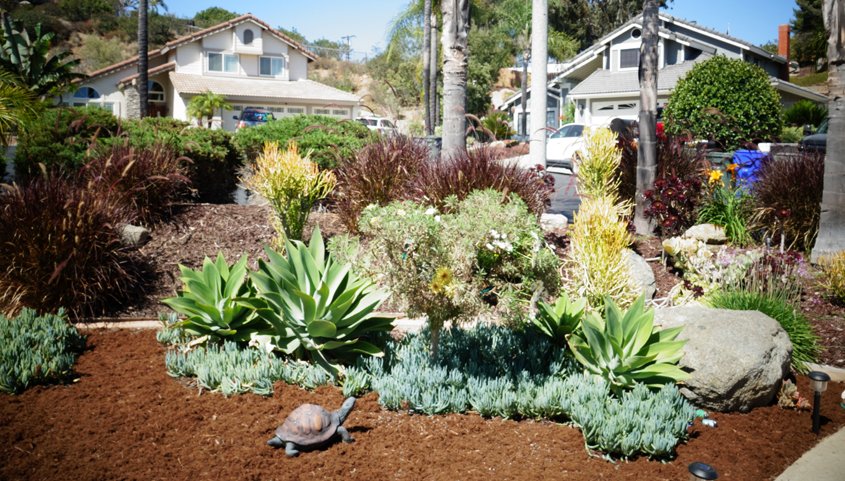
The new landscape now includes a drip-irrigation system, rotating nozzles, and a smart irrigation controller to schedule efficient water use. Photo: Otay Water District
Equipped with a new landscape plan, Laframboise enlisted the help of her husband and son to remove all the grass responsibly. She installed water-wise features such as mulch, stone, and low-water-use plants.
Her landscape now includes a drip-irrigation system, rotating nozzles, and a smart irrigation controller to schedule efficient water use. The El Cajon homeowner decreased her overall water use by an average of 42%. She waters only two or three times a week and especially enjoys the pollinators attracted to her new yard. She can maintain it on her own and no longer needs a lawnmower.
Laframboise’s project qualified for a $2,140 rebate from the Water Authority’s WaterSmart Turf Replacement Program.
Landscaping project continues to evolve
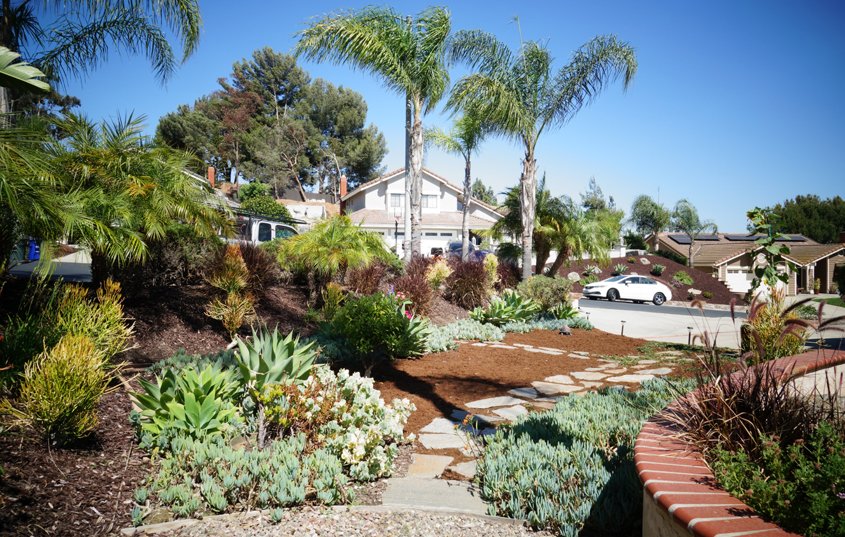
The new landscaping continues to evolve with new features. Photo: Otay Water District
“My yard evolves as I learn more about different plants and where I live locally. I recently replaced dyed wood chips for shredded redwood bark. It is safer for pets, children, and wildlife,” said Laframboise. “I also plan to add more natives to attract more wildlife and further reduce my water use.”
The Otay Water District Board of Directors recognized Laframboise at its July 7 meeting with a certificate, a gift certificate to a local nursery of her choice, an “Award-Winner” yard sign to display, and other promotional items.
(Editor’s note: The Otay Water District is one of the San Diego County Water Authority’s 24 member agencies that deliver water across the metropolitan San Diego region.)







